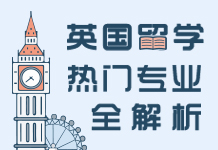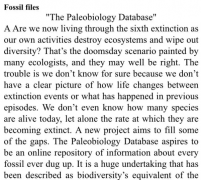2015年11月7日雅思阅读考试真题回顾及解析(B卷)
来源:朗阁海外考试研究中心
浏览:
发布日期:2015-11-09 15:11
摘要:2015年11月7日的雅思阅读考试分为A、B两卷,下面青岛朗阁小编将为大家带来2015年11月7日雅思阅读考试真题回顾及解析(B卷),希望对大家有所帮助~
2015年11月7日雅思阅读考试分为A、B两卷,下面青岛朗阁小编将为大家带来2015年11月7日雅思阅读考试真题回顾及解析(B卷),希望对大家有所帮助~
朗阁海外考试研究中心 李佩玟
Reading Passage 1-B卷
Title:Reef fish study
Question types
判断题:4
填空题:摘要填空5+表格填空4
参考答案
1.False 专家只重视动物们的逃跑速度对动物躲避
天敌的重要性。(原文中还说到了size等因素)
2. True 体积大的动物视力更好。
3. False 鱼的幼年与成年阶段特征一致。
4. Not Given 鱼的生长速度在成年阶段慢于幼年。
摘要填空
5. 是猎食者还是被捕者与mouth size有关
6. 体型in medium size 更容易成为猎食者的对象
7. 在artificial light的帮助下用网抓鱼
8. 把另一种鱼被抓回并运送到laboratory有困难
9. 实验的时间与下一个new moon有关
表格填空
10. fish body
11. open ocean
12. reef
13. mortality
文章内容回顾
文章主要讲述了岩礁鱼类(reef fish)从幼鱼成长进化为成年鱼的过程并且讲述了捕食者的目标种类,即Reef fish的体型特征与被捕食的关系。其中, 大小、速度、视力等都会影响是否能逃脱危险。科学家提出假设:体型越大越不容易被吃,然后对此假设进行了讨论:体型大是否作为一种身体机能的优势。
题型难度分析:本文题目集中为常见的判断题和填空题,全部为顺序做题,难度较小,基本15分钟内应该完成。
题型技巧分析:填空题相较其他题型较容易,但考试应注意做题不要过于依赖定位词和关键词,一定要联系上下文,注意逻辑连接词。另外,注意看好题目要求(no more than two/three words),防止出现不必要的失分。
剑桥雅思推荐原文练习:剑6 Test 2 Passage 3(判断题练习),剑5 Test 1 Passage 1(摘要填空练习)
Reading Passage 2-B卷
Title:Weighty matters
Question types
匹配题:段落信息匹配7+人物观点匹配5
摘要填空题:4
文章内容回顾
每个专家对减肥各执己见并且都有局限性:有人认为减肥没必要,应该遵循自然规律;有人认为运动量比较少的运动对减肥没用,有人则觉得长期坚持这种运动可以减肥且保持不反弹;有人认为肥胖可能由母亲传给孩子,专家们致力于通过改变DNA排序来预防;还有专家提出肥胖是病毒导致的。
参考答案
段落信息匹配
14. E
15. D
16. C
17. B
18. G
19. C
20. F
人名理论匹配
21. C
22. D
23. E
24. F
25. A
填空参考答案:chickens/AD-36/gene/block/vaccine
题型难度分析:本篇文章是医疗健康类文章,以匹配题为主,难度较大。其中人名匹配题目,人名比较集中定位容易,所以难度相对段落匹配低。
剑桥雅思推荐原文练习:剑5 Test 1 Passage 2,剑4 Test 2 Passage 1,剑9 Test 4 Passage 2
Reading Passage 3-B卷
Title:Morse Code
Question types
List of Headings 7
判断题 5
文章内容回顾
本文主要讲述了Morse发明电报的事: 文章首先给出一个事件并讲述了电报发明的萌芽,之后讲述了Morse得到政府支持建立了第一条线路,第三段讲述其助手对电报进行了改进,第四段说明这项发明的优点。第五段说成立了电报协会达成了两项协议,第六段讲述了Morse code在新技术中被拓展,最后讲Morse退休以及去世。
相关英文原文阅读
Morse Code
A Morse code is being replaced by a new satellite-based system for sending distress calls at sea. Since 1992 countries around the world have been decommissioning their Morse equipment with similar (if less poetic) sign-offs, as the world's shipping switches over to a new satellite-based arrangement, the Global Maritime Distress and Safety System. The final deadline for the switch-over to GMDSS is February 1st, a date that is widely seen as the end of an era. For although dots and dashes will not die out altogether—they will, for example, continue to be used by amateur radio operators, spies, and some members of the armed forces—the switch to GMDSS marks the end of the last significant international use of Morse.
The code has, however, had a good history. Appropriately for a technology commonly associated with radio operators on sinking ships, the idea of Morse code is said to have occurred to Samuel Morse while he was on board a ship crossing the Atlantic. At the time Morse was a painter and occasional inventor, but when another of the ship's passengers informed him of recent advances in electrical theory, Morse was suddenly taken with the idea of building an electric telegraph. Other inventors had been trying to do just that for the best part of a century. Morse succeeded and is now remembered as “the father of the telegraph” partly thanks to his singlemindedness—it was 12 years, for example, before he secured money from Congress to build his first telegraph line—but also for technical reasons.
Compared with rival electric telegraph designs, such as the needle telegraph developed by William Cooke and Charles Wheatstone in Britain, Morse's design was very simple: it required little more than a “key” (essentially, a spring-loaded switch) to send messages, a clicking “sounder” to receive them, and a wire to link the two. But although Morse's hardware was simple, there was a catch: in order to use his equipment, operators had to learn the special code of dots and dashes that still bears his name.
Originally, Morse had not intended to use combinations of dots and dashes to represent individual letters. His first code, sketched in his notebook during that transatlantic voyage, used dots and dashes to represent the digits 0 to 9. Morse's idea was that messages would consist of strings of numbers corresponding to words and phrases in a special numbered dictionary. But Morse later abandoned this scheme and, with the help of an associate, Alfred Vail, devised the Morse alphabet, which could be used to spell out messages a letter at a time in dots and dashes.
At first, the need to learn this complicated-looking code made Morse's telegraph seem impossibly tricky compared with other, more user-friendly designs. Cooke's and Wheatstone's telegraph, for example, used five needles to pick out letters on a diamond-shaped grid. But although this meant that anyone could use it, it also required five wires between telegraph stations. Morse's telegraph needed only one.
参考答案
i Standard and variation for the code
ii Substitution for Morse code
iii Emergence of many employment opportunities
iv The advantages of Morse’s invention
v Discovery of electricity
vi Sea application of Morse code expanded under new technology
vii The invention of Morse code
viii The need for radio operators
ix International reach of Morse code
29. Paragraph A ii
30. Paragraph B vii
31. Paragraph C iv
32. Paragraph D i
33. Paragraph E iii
34. Paragraph F ix
35. Paragraph G vi
判断题
36. Morse had already been famous before the invention of code. Not Given
37. Morse waited for a long time to receive support from Congress. True
38. Compared with other designs, the learning experience of Morse code is demanding. True
39. Many big cities prefer to employ the rural operators. False
40. Morse died from overwork. Not Given
题型难度分析:本文属于较为常见的发明、发展史类的文章,主旨题占比重较大,增加了文章做题难度。
题型技巧分析
List of headings(主旨大意或称标题配对题)是雅思阅读中难度较高的一种题型,要求给段落找小标题, 也就是总结段落的主旨内容,对理解文章的结构要求高。
这种题型具有独特的结构特征,即它一般出现文章之前,由两部分组成:一部分是选项,另一部分是段落编号,要求给各个段落找到与它对应的选项。
解题步骤:
1.确定文章主题,划掉举例的选项以及段落
2.分析选项,划词关键词
3.回到原文,确定段落主题:抓住各段主题句以及核心词,关注段落首句次句末句以及段落中间特殊词之后的内容(如转折词、举例词等)
4. 对比选项解题
剑桥雅思推荐原文练习:剑7 Test 1 Passage 2,剑8 Test 4 Passage 1
考试趋势分析和备考指导
本次雅思考试又一次任性地启动了A/B 分卷, 其中A卷两新一旧,B卷为三旧。
从题型上讲,本次雅思阅读考试出现了较多的判断、填空题目,虽然目前这两种题型出题率有下降趋势,但考生仍然不应忽视对于此类雅思特色题型的练习。
正如之前几次考题回顾分析所说,匹配题(配对题)数量大大增加了,这在本次考试的A/B两卷中都有体现。这类题型对考生英语功底、语言实力要求很高,建议考生全面提高阅读能力,在备考中加强对核心词汇的记忆、多做长难句分析练习,提高综合实力应考,毕竟面对此类考题“看懂才是王道”。
另外本次考试出现了丰富的话题,包括科技类、医疗健康类等,建议考生加强相关话题词汇储备,以求更自信地应对阅读考试。

扫二维码,添加朗阁咨询老师,备注“官网”
免费领取雅思、托福备考计划、精选资料,最新口语新题考点资料
25
2022-06
-
2020年1月16日雅思听力考试真题
2020年1月16日雅思考试已经结束,正在备考雅思的小伙伴,你们想要知道这次考试的听力部分都...
25
2022-06
-
2020年1月16日雅思阅读考试真题
正在进行雅思备考的小伙伴,你们想知道2020年1月16日雅思考试的考试内容吗?今天为了帮助大家...
25
2022-06
-
2020年1月16日雅思写作考试真题
今天为了帮助正在进行雅思备考的小伙伴更好的准备雅思考试,青岛朗阁雅思写作名师 费晓静...
25
2022-06
-
2020年1月16日雅思口语考试真题
今天青岛朗阁雅思口语名师张开翼为大家整理了2020年1月16日雅思口语考题总结,分析了雅思口...
04
2020-12
-
2020年11月14日朗阁雅思听力考题回顾
今天,要和大家分享的是2020年11月14日朗阁雅思听力考题回顾,希望这篇文章能够对大家的学习...
04
2020-12
-
2020年11月14日朗阁雅思阅读考题回顾
今天,要和大家分享的是2020年11月14日朗阁雅思阅读考题回顾,希望这篇文章能够对大家的学习...
热门课程
大家都在看
阅读(2095)
阅读(1965)
阅读(1942)
阅读(1323)
阅读(1093)
阅读(831)







